The Airline 9005 guitar amp was sold by Montgomery Ward’s in the early 60s. I’ve seen examples with two 12″ speakers and one 12″ speaker. The original case for the amp looked super sweet.
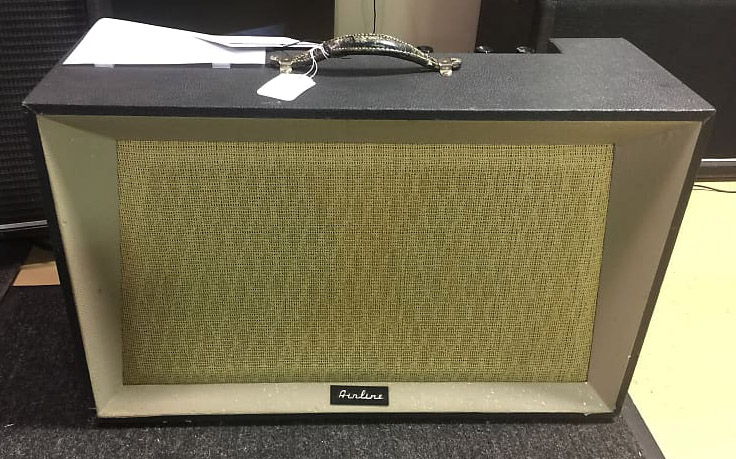
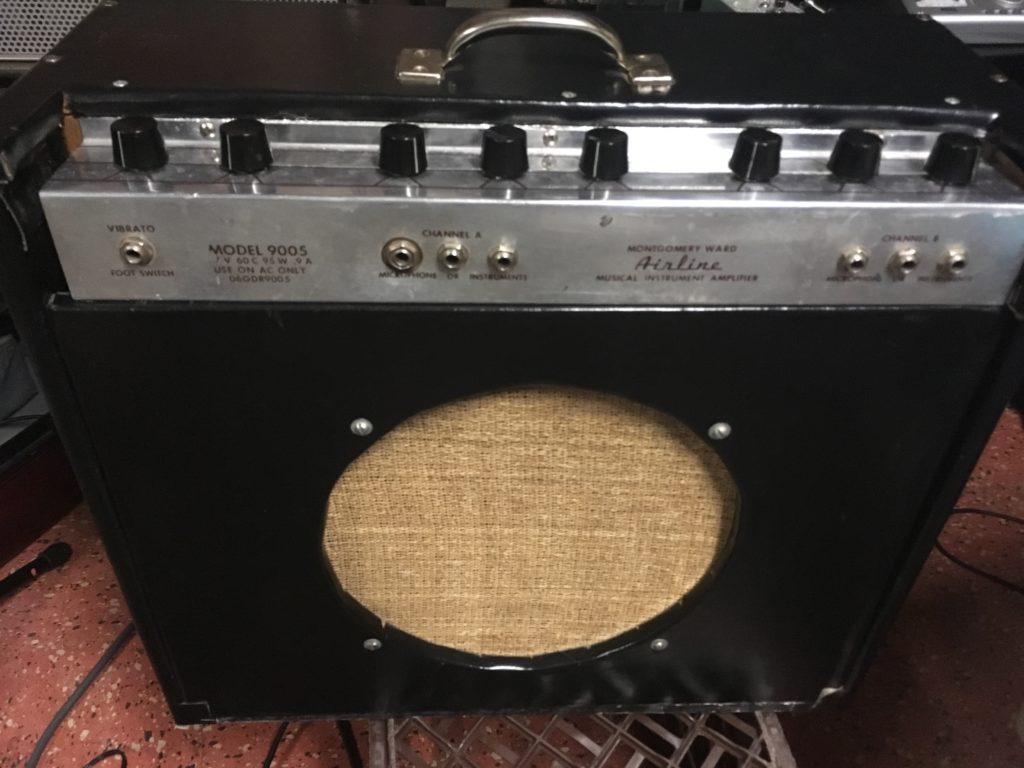
I recently got one on the bench – however, it had been re-cased into an ill-fitting, pleather-covered, plywood and MDF board case. The upper chassis was moved from the back of the amp to the front.The owner said it was not working and wanted to see what could be done to bring it back to working condition.
AIrline 9005 Amplifier Schematic
The schematic for the Airline 9005 amplifier reveals several unique design features: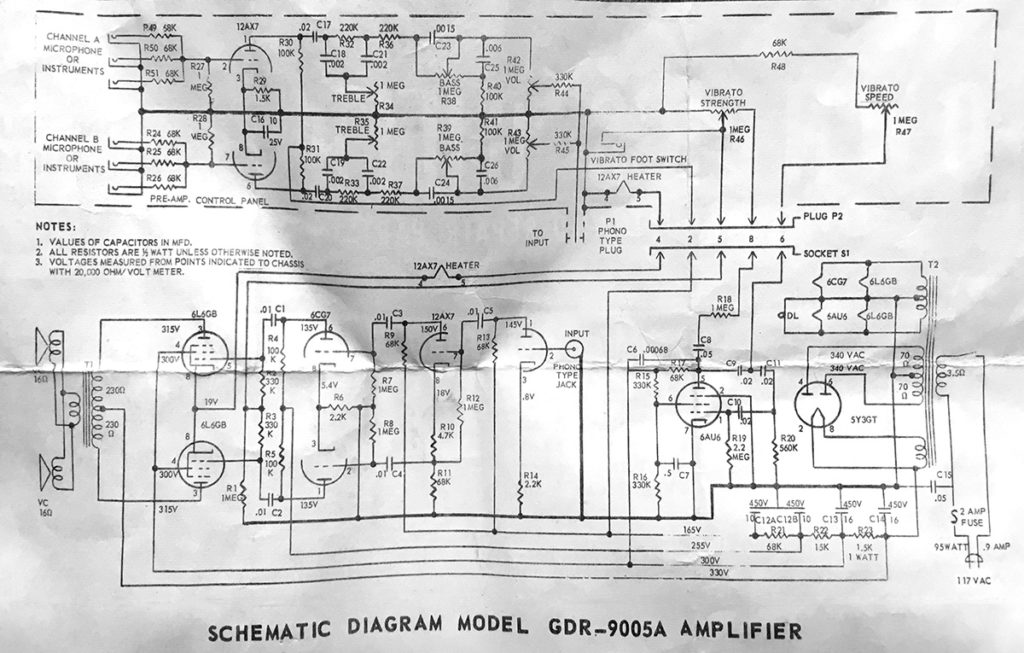
1. Are Two Chassis Better Than One?
The first unique aspect of the design is that the Airline 9005 amp has two chassis. The upper chassis contains the inputs, the preamplifier, tone stack, and vibrato controls. The lower chassis contains the power supply, the output stage, and the vibrato circuit. The two metal chassis are connected by a shielded cable carrying the audio signal path and by a multi-pin connector carrying high DC voltage, vibrato connectors, and part of the cathode bias design.
2. Biased By Heater Filaments!!
The output stage of the Airline 9005 has quite a unique design – the 6L6GB power tubes did not have a fixed bias OR a cathode bias. The cathodes of the 6L6GC tubes were connected to ground through the heater pins of the two 12AX7 tubes! The heating of these tubes (roughly 12.6v x 2 = 25.2v) were what provided bias for both 6L6GB output tubes.
What’s more – one of the two 12AX7 tubes that bias the power tubes is located on a different chassis! They were wired in series from cathode pin 8 of the two 6L6GB tubes through pins 4 & 5 of the first 12AX7 tube, through the unshielded connector cable running to the second chassis, through pins 4 & 5 of the second 12AX7 tube, and then to chassis ground of the upper chassis, which was grounded to the lower chassis via the connector cable. Quite an arrangement.
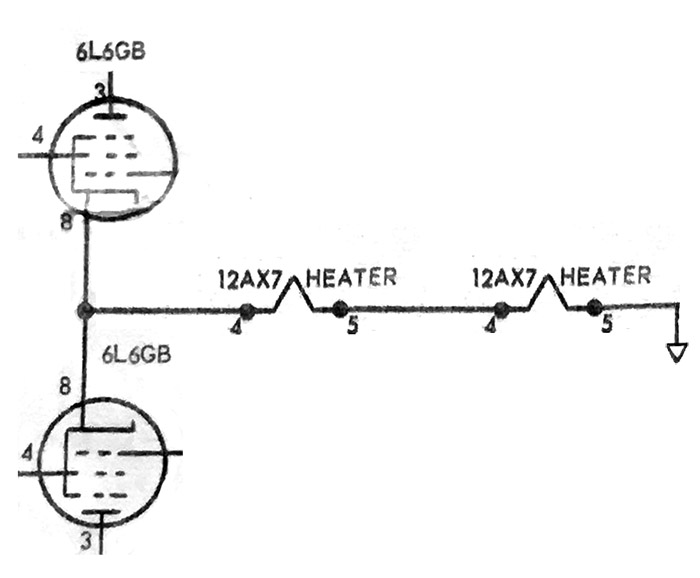
This unconventional design caused the amplifier to have an abnormally long warm-up time – usually between 60-70 seconds. It also gave ample opportunity for noise and interference to be introduced.
There is no real sonic benefit to this design at all – it was a design choice driven by cost-savings – either to compensate for a chosen power transformer that couldn’t support the tube complement or to save a few nickels by not having to add a cathode bias resistor and cathode bypass capacitor.
3. Two Identical Channels With Six Non-Shorting Input Jacks!
The amp has a total of SIX input jacks over two electrically identical channels. While input jacks are marked “Microphone or Instrument”, the impedance of all jacks is exactly the same. Not sure what the benefit is here – as plugging instruments and microphones into all six channels simultaneously without individual attenuation controls is unlikely to sound very good.
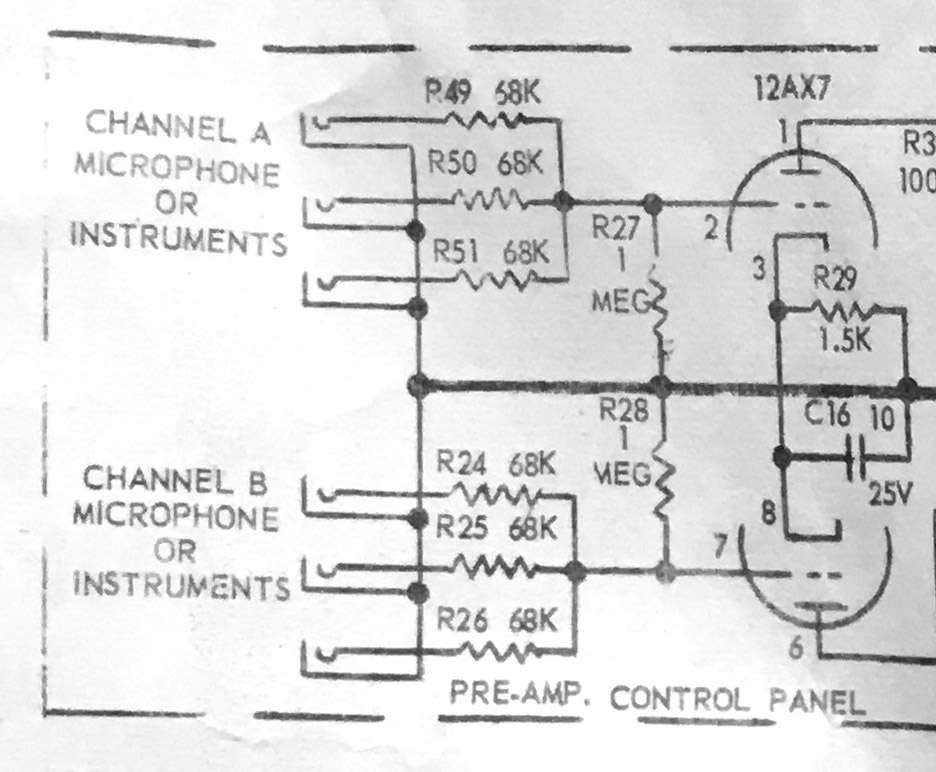
These inputs also use non-shorting jacks, meaning that all channels are “on” regardless of which have inputs plugged into them. We’ll see later how this design causes some issues in the circuit.
Getting inside the Airline 9005
Getting the two chassis out basically involved taking the entire cabinet apart. Once they were removed, working on the mostly point-to-point wiring was very straightforward.
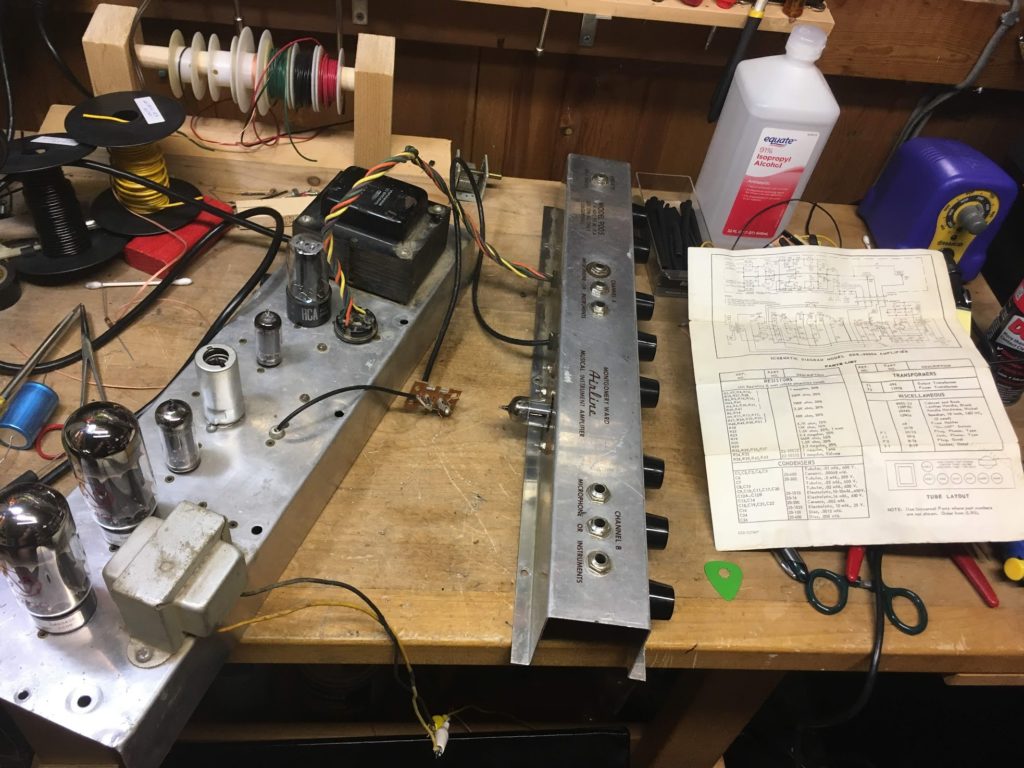
Once I flipped the main chassis over, it looked to me like the amp had seen very little electrical servicing. What appear to be the original red paper electrolytic filter caps were in place and the amp was elsewise full of Japanese Sangamo “greenies” – notorious for drifting and becoming leaky.
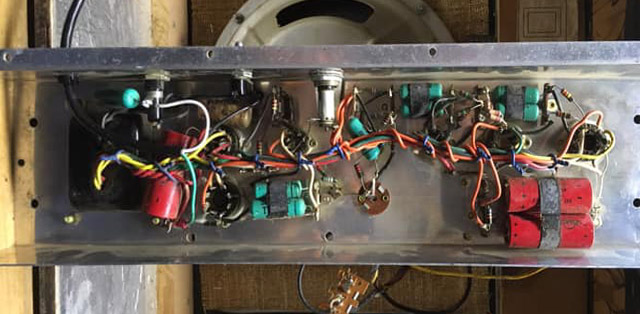
Besides the capacitors that would definitely be replaced – the other observable issue was that the wiring of this unit (high voltage DC supply lines, AC filament lines, signal path wires) were all twisted together in a big spaghetti mess through the center of the amp. That can’t be good for noise and interference!
First Things First: Rebuilding the Power Supply and Recapping
The old electrolytic filter caps (all dramatically out of tolerance and leaky) were removed and replaced with Nichicon UCY caps (as described here). The resistors between filtering stages were all toasted (R22 was a 68k resistor that tested 1.1M!) and were replaced.
All of the old Sangamo “greenie” capacitors throughout the unit were replaced – most were off-tolerance and leaky. A few of the resistors were also replaced where tolerance was exceeded.
The First Power-Up of the Airline 9005
With the power supply rebuilt, tubes and components tested (and replaced where necessary), it was time to power up and see how it sounded. However – I was confronted with a very strange whistling oscillation on both channels when volume levels were above 5. After much troubleshooting, I determined a curious thing: the oscillation was only present when the speaker was put in place. If you removed the speaker further from the chassis, the oscillation disappeared.
Also notice the extreme noise level at 0:05 – I know I had the volume and tone controls cranked but it still seemed quite noisy!
The Fix: Grid Stop Resistors and a Rebuilt Input Circuit
When one considers that this upper chassis had originally been placed behind the amp (and further from the speaker) it makes sense that this new frontal arrangement could be the cause of the problem. After much mucking about and troubleshooting and research, I realized the overabundance of non-shorting input jacks was definitely part of the problem. These non-shorted inputs were basically acting as multiple antennas for RF interference.
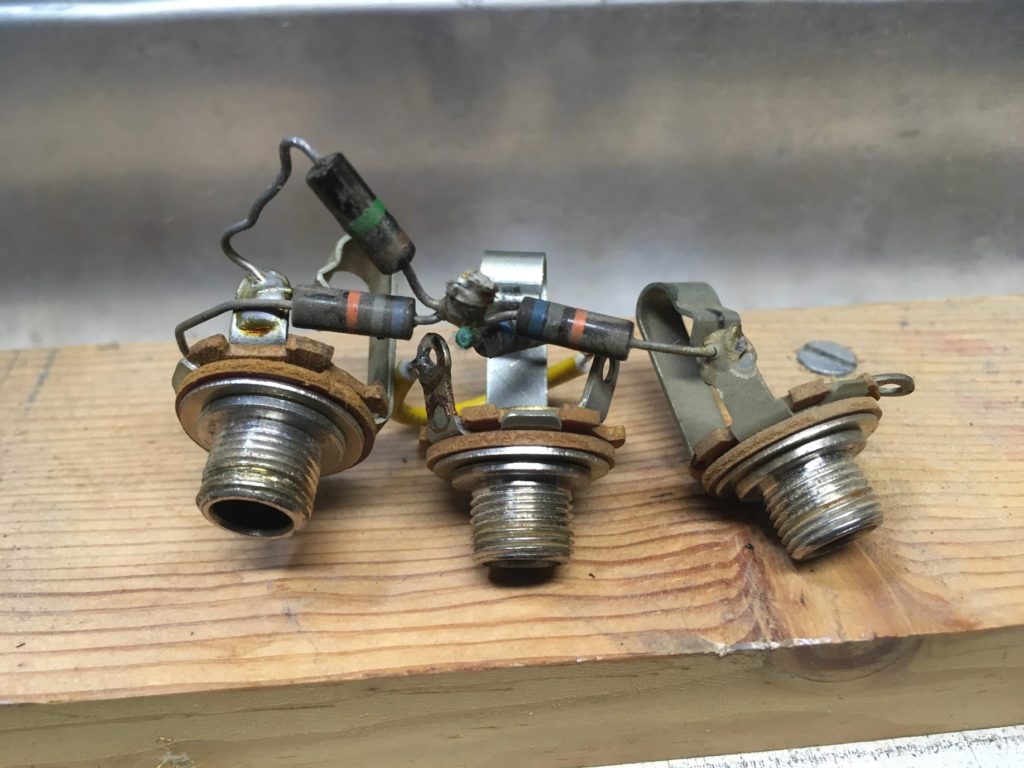
Upon consultation with the owner, I decided to eliminate one of the jacks from each channel, and wire them with new metal film resistors and shorting jacks in a Fender-style input arrangement where you had one high impedance jack and one low impedance jack.
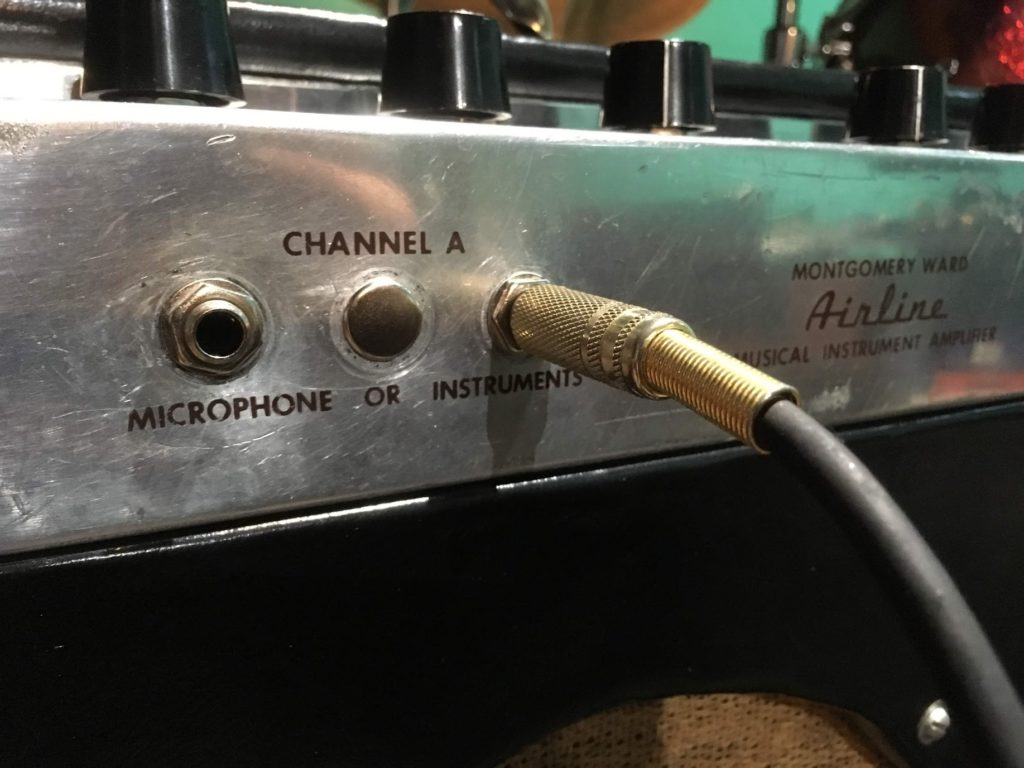
Secondly, I saw that in the power tube design, the 6L6GB tubes did not have a grid stopper resistor. As Merlin Blencowe advises – I added metal film 10k grid stopper resistors right before the grids of the 6L6GB tubes to control parasitic oscillations and noise.
The Second Power-Up
Oscillations were finally minimized (though curiously, in certain environments they could still sometimes pop up) and amp sounded quite nice overall:
In Part 2 of this repair series, I will take you through a somewhat involved modification I made to this Airline 9005 circuit to improve stability overall.

